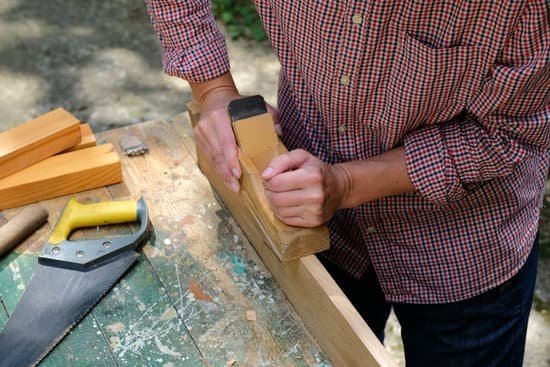Introduction
Woodworking machinery can be potentially dangerous when not used properly. However, following the right set of safety procedures allows woodworkers to operate their machinery safely and avoid potential hazards. In order to practice safer operating procedures with woodworking machinery, it is important to learn the dangers associated with common woodworking machineries such as saws, jointers, routers, drills and finishing machines.
By familiarizing yourself with the different parts of a machine, you are better able to understand how they operate and recognize potential hazards associated with them. Additionally, it is essential that every operator follows proper safety protocols during the use of their equipment. This includes wearing protective gear such as goggles and earplugs when necessary; ensuring a clearance zone for an appropriate amount of space between workers and machine components; following the operating instructions manual step by step; avoiding an obstruction or entanglement from clothing; ensuring the power cord stays out of sight from machine components; unplugging any tool not in use; being cautious when dealing with hazardous chemicals and always keeping both hands away from all moving components.
By implementing these safe carrying techniques for all types of woodworking machinery, operators will create a much safer working environment for themselves and other around them. Not only will following these practices help prevent potential accidents but also ensure your projects come out just as professional as you’d hope them to be!
Benefits of Safe Woodworking Practices
Using safe practices while woodworking offers many benefits and rewards. When working with woodworking machinery, it is important to adhere to safety standards and best practices. Doing so ensures that the tools are used properly and safely, reducing the risks of injury or damage. Furthermore, taking safety precautions provides a positive work environment for all involved.
Safety is a priority when using woodworking machinery and equipment. Following standard safety protocols can help protect you from potential hazards caused by careless use of the tools or improper handling of materials. When used in the correct manner, such as with guards in place and equipped with safety features, most machines are nearly mistake-proof; this provides peace of mind and confidence that work will be completed safely and efficiently.
Adhering to safe practices also promotes healthier working habits; you will likely maintain better focus on your task due to less distractions from stressors like slips, trips, falls or inadvertent contact with potentially hazardous moving parts. Moreover, proper use of your equipment should greatly improve its overall performance; when simple operation-related tasks such as cleaning up after every session are followed regularly your tools should remain in top operating condition helping maintain optimal productivity levels throughout their lifetime.
Common Types of Woodworking Machinery
Woodworking machinery includes countless tools and pieces of equipment made for cutting, shaping, drilling, dressing and more. From band saws and circular saws to sanders and routers – each tool presents its own unique set of hazards. To help minimize the risk of serious injury, it is important to understand the various types of machines and how they should be used safely.
The most common type of woodworking machine is the table saw. This machine is composed of a spinning blade at the end of an arm on top of a flat base. It is typically used to cut planks and boards into specific shapes or sizes. Band saws are similar, though the blades themselves are significantly wider than those found on table saws. When using either type of saw it is critical to use both a push stick and riving knife to maintain proper control over the piece being cut as well as ensure that any cut-off pieces do not fly back in the operator’s direction.
Radial arm saws are circular shaped blades with support arms extending off them which allow them to pivot while cutting certain shapes. With their adjustable arms and ability to move in various directions they can be used for both large cuts as well as intricate detailing work such as dovetailing joints or edging trim boards amongst other things. However, due to their agility it’s important to exercise extreme caution when operating this type of machinery by making sure your hands remain safe from contact with the blade itself and all safety guards remain in place when operating them.
Jointer machines are primarily used for making edges straight or planing small pieces such as cut-offs from larger boards or just flattening out hunks of wood for a given project. The beds on these pieces of equipment have three rollers underneath them that slowly rotate during use which allow one surface against another allowing for perfect leveling or trimming down excess wood material from board faces. Similarly planers have tough grooved rollers that force board faces past razor sharp knives creating milled boards with smooth curved finished surfaces ready for assembly projects etc.. When using either type it’s very important to keep fingers away from these dangerously spinning rollers at all times!
Lastly lathe machines are versatile pieces usually employed in more experienced shops specializing in custom turned objects such as stairway balusters turned posts spindles etc… They can come in several different versions (depending on economics) ranging from simple manual versions meant more like bench mount devices up twelve foot production models with hundreds feet per minute turning speed capabilities! In both scenarios however adequate dust collection systems experts suggest should always be employed & portable ear/eye protection recommended to protect ones hearing/vision during continuous operation over extended periods!
Pre-Operation Safety Checklist
Before using any woodworking machinery, it is essential to go through a pre-operation safety checklist. This ensures that the proper steps are taken to ensure the safe use of the machine. Generally, this includes doing a quick visual inspection and testing each component of the machine to make sure it is properly operating. After completing an inspection, it is important to make adjustments as necessary if any potential safety hazards are found.
When inspecting woodworking machinery, it is important to look for any signs of wear and tear on components, including the blades and belts. Additionally, all screws, nuts and bolts should be checked for tightness or corrosion and then tightened if needed. Inspections should also include checking all available guards for proper alignment or if any parts may need replacing given their age or condition. It is also important to review dust collection systems for check that all hoses are secure as well as confirming fans are operational which helps reduce sawdust from accumulating in the workspace that can be combustible when present in excess amounts.
Finally, before operating a machine it is essential to check the power sources (circuit breakers/ switches) to confirm they are working correctly so they can shut off quickly in an emergency situation. By regularly following these simple steps prior to using woodworking machines you are ensuring not just your own personal safety but those who share your workspace with you too!
Operating Safety Precautions
When operating woodworking machinery, it is essential to practice safe use in order to minimize the risks associated with injury and property damage. Some of the most vital safety practices for operating woodworking machines include wearing appropriate protective gear, following the manual instructions when setting up or adjusting the machine, ensuring back- or dust-collection systems are properly secured and properly mounted before operating, and avoiding loose clothing or jewelry that could get caught in moving parts. It is also important to never attempt to force material into a machine at an excessive speed; always feed materials slowly and lock it securely with a clamp if possible. Additionally, never leave a running machine unattended and do not operate any machine with malfunctioning, broken, or missing components as these issues can lead to serious injury. Finally, always unplug the power source before inspecting or performing maintenance on a tool. Following these safety precautions can help ensure a safe working environment while ensuring users are better protected from potential hazards such as electrocution and laceration.
Protecting Eyes and Skin
When engaging in any kind of woodworking machinery, it is important to always wear appropriate safety gear. Safety goggles are a must – even for short-term use. This helps protect your eyes from flying debris, such as splintering wood or metal filings. Additionally, if you are using any sort of power tools, wearing protective gloves and long sleeved clothing will help to prevent injury from moving parts and flying fragments from the saw. It is also important to ensure that your workspace is clean and free of clutter; this will both decrease the likelihood of any accidents occurring and make it easier to concentrate on your work. Lastly, be aware of the noise level when you’re working – earmuffs or earplugs should be worn to help protect against long-term exposure to high levels of noise.
Working With Higher-Powered Machines
Working with higher-powered woodworking machinery can be a daunting process and it is essential that you exercise caution in order to ensure safety when operating and working around such machines. Generally, it is recommended that one wears protective gear such as hearing and eye protection, appropriate clothing (e.g. closed toe shoes), and gloves when working near these machines. Additionally, before beginning work it is important to clear the workspace of any tools or objects that may become airborne during use in order to minimize risk of injury.
Furthermore, the user should read carefully any instructions provided by the manufacturer regarding proper operation of the machine and any safety procedures necessary for successful operations. All safety guards and shields should be checked prior to each use to make sure they are in good condition and secured properly on the machine. Pay close attention to all guidelines for proper machine setup such as use of special or sharpened cutting tools, connection of dust collection systems, primary power switch locations, jigging devices etc. If necessary contact an expert or take a course in woodworking safety before attempting more advanced tasks with your machine.
Considerations for Repairs and Maintenance
When performing maintenance and repairs to woodworking machinery, it is essential to take certain precautions for the safety of the user. Before servicing an equipment, one should always unplug the machine and read any available safety notices. Protective gloves, dust masks, safety glasses and other PPE should be worn by those performing repairs. The workspace must be clean, dry and well-lit. Appropriate tools that are in working order should be used at all times. For more intricate repairs, one may have to get professional help depending on their skill level. An appropriate lifting device should also be used when heavy components need to be taken apart or refitted as there is a risk of injury if it is done manually. Finally, routine maintenance and regular inspections must be carried out to keep the equipment in good working order so that it can function optimally.
Summary
When operating woodworking machinery safely, it is important to follow a few basic rules. Machine operators should always use Personal Protective Equipment (PPE) such as a face shield, ear protection, and gloves. It is also essential that the machine is properly set up with appropriate guards in place, the correct speeds and feed rates are selected and the correct tooling used. Proper maintenance of the machine and its components is also very important to ensure smooth operation. Staying attentive and focused on the task at hand should help minimize risk of unintentional contact with moving parts as well as accidental cutting or trapping of fingers or other body parts. Following machine safety procedures help to protect operators from injury and prevent damage to the machines and associated equipment from occurring. All workers should be trained in using woodworking machinery safely to ensure that risks are minimized, making operations more efficient. In addition, all users should be familiar with the machineries’ Emergency Stop (ESTOP) button in case of emergencies or potential danger.

Hi everyone! I’m a woodworker and blogger, and this is my woodworking blog. In my blog, I share tips and tricks for woodworkers of all skill levels, as well as project ideas that you can try yourself.





